Impressions – Jon-Benet Ramsey, 20 years on.

The Ramsey Case Continues – the Burke Interview
We recently wrote about the speculative case mounted in a CBS Special concerning the unsolved death of Jon Benét Ramsey.
Since then we have had the opportunity to view the interview by Dr Phil McGraw with Burke Ramsey, now 29 years old.
Recorded earlier this year and screened in September, the first half discloses no smoking pistol but by the same token, it adds fuel to the flame (pardon the mixed metaphors).
Burke denies allegations of assaulting his sister, on the night she died or ever before.
There will be some who find his demeanour in the interview odd. He looks fidgety and nervous. He smiles throughout, including when it is not appropriate.
Asked where he was at the time of Patsy Ramsey’s 911 call to Boulder Police, Burke says he was asleep in bed, and under cross-questioning on that, says that he can’t explain the suggestion that his voice is heard in the background during that call, “unless someone erased my memory or something.”
These oddities can’t support any theory of guilt, in our opinion. This man was 9 at the time of his sister’s violent death. As he said, at the time, “the media made our lives crazy.” That publicity storm “made me a private person.”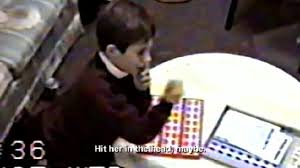
And yet, and yet….
We have a judicious selection of home movies from happier times and often Mum and Dad speak of their love for their children, an assertion we find easy to believe. But an impression lingers that Jon Benét was the golden child in her parents’ eyes. Asked if he felt that she “got all the attention,” he replied “No, that was normal to me.”
Burke’s account is that the last time he saw his sister was in the car on the way home from a Christmas Day gathering at the home of the Whites, close friends of the Ramsey Family. During the night he says he heard nothing (with a peculiar smile). The first thing he recalls is his mother rushing into his room (“going psycho”) looking for her daughter. “Where’s my baby?” Burke says he “just lay there” and continued to do so. This is plausible, but to our minds, it is also odd. McGraw, who conducts the interview impeccably and fairly, is of like mind. He put to Burke at this point that his supine behaviour in this situation “seems really odd to me,” and the response is: “I guess I like to avoid conflict…part of me doesn’t want to know what’s going on,” which is, frankly, not an answer at all.
Eventually, John Ramsey came to collect Burke and a detective told him, in the kitchen, that Jon Benét was missing. Burke, seeming unconcerned, said “She’s probably hiding somewhere.” Burke was taken to a friend’s house where, some time later, his father John came to tell him that his sister was “in heaven now.”
Whilst his expression at the funeral is not the classical grief response we expect from movies and TV, there is evidence that he burst into tears when told the news on the day. Of course, we can speculate that her death was news even if he had been the agent of death.
Now to the famous three-page ransom note:
Burke had never looked at the note before: he didn’t want to look at it, which is unusual but understandable. Looking at it now, he observes that the note looks very sloppy and that Patsy had always stressed good penmanship. This is hardly exculpatory evidence. But we can accept Burke when he says that Patsy was ‘never violent.’
Whereas Burke has claimed a large measure of absence from the horrible events unfolding in the Ramsey house on the morning of Boxing Day 1996, he was up and about the night before. He was downstairs, putting a new toy together, when everyone else was in bed, and he had a late snack. A glass of iced tea in the kitchen had his fingerprints on it. There was pineapple next to the glass, and Burke admits he could have had pineapple that night. Of course, as is widely known, what looked like chunks of pineapple were found in Jon Benét’s upper digestive tract at autopsy.
Asked about the heavy flashlight found in the kitchen the day after the tragedy, Burke did not recall it. Asked about his baseball bat, he said he generally left that lying around outside the house.
The first part of the interview concludes with direct questions and answers. Asked if he had ever sexually abused his sister, hit her with a flashlight, or the baseball bat, or jammed the end of a piece of toy-train track into her body (the so-called ‘stun-gun’ marks), Burke answers with a resounding and persuasive “no.” Asked if he had ever hit Jon Benét with a golf club, he says yes, but that was an accident, where the club clipped the side of her head. Again, quite believable and plausible. The persistent rumours that Burke had previously left faeces in Jon Benét’s room more than once are not addressed. Nor does Dr Phil suggest that Burke take one of the psychologist’s beloved polygraph tests. We can only assume that, while on his or her expensive knees, begging Burke not to go on tv, Burke’s lawyer managed to get him to firmly say “no” to something.
But we come back to footage of the interview of Burke only days after the death (see image above), apparently not publicly shown before, where Burke responds in a way that chills the bones. He is partially disengaged, playing with a toy, but then volunteers statements such as “I know what happened,” and being explicit about the matter, demonstrating with a thrusting motion a stab with a knife, and mentioning his sister being hit with a hammer. He’d heard the house creaking during the night.
In the second part of the interview the possibility that an intruder entered through an already broken window in the basement, made his way to Jon Benet’s room, possibly sexually assaulted her (the public has never been clearly told whether or not the child was assaulted) was raised. The intruder then left her dead or dying in the basement, her arms tied over her head and her neck tied with a makeshift garrotte. The presence of a suitcase under the window supports this theory. It is well known that Jon Benet was exposed to the public gaze during the extraordinarily sexualised pageants in which she competed and that the house was open to tours. The main problem with this theory is – of course – the ransom note. It seems clear that the note was written in the house and it took time. The odd ransom amount sought – $118,000 – would be a pittance to the millionaire family and is approximately the amount which John Ramsey had recently received by way of a bonus.
What we hadn’t known until we saw that second part of the Dr Phil interview is that more recent DNA testing has revealed male human DNA under Jon Benét’s nails, on the waistband of her pyjamas and (again this is vague), possibly in her underwear. The DNA is not from a Ramsey. But this is vague, determined 20 years after the event and must be treated with caution, although the Boulder Police (now back-pedalling as fast as they can) were quick to say that it “exonerates” John, Burke and the late Patsy Ramsey. It doesn’t.
There was historical footage of John being asked why the date of “25 December 1996” was chosen as the date of death for Jon Benet’s memorial stone – how did her parents know the date of her death? John answers quite reasonably and affectingly that he wants the world to remember that she died on Christmas Night. In any event, one date or the other had to be chosen. We saw sad footage of Patsy at the graveside, admiring the flowers and other tokens left by strangers. John uncovers a message written in red on the grave – “Daddy did it”.
Burke repeatedly says that he doesn’t know what happened to his sister on the night she died. Let us hope that Jon Benét did not either.
Leave a comment...
While your email address is required to post a comment, it will NOT be published.

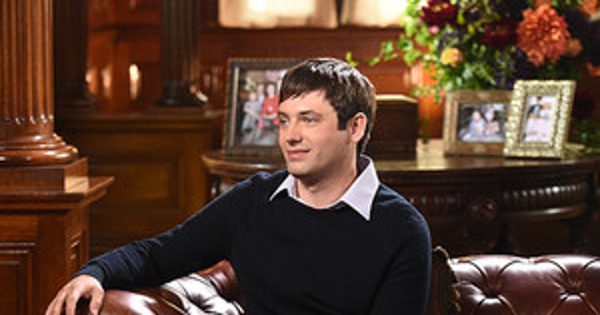
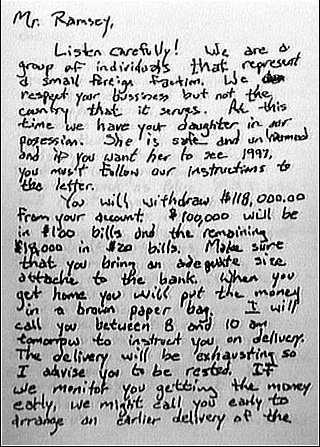
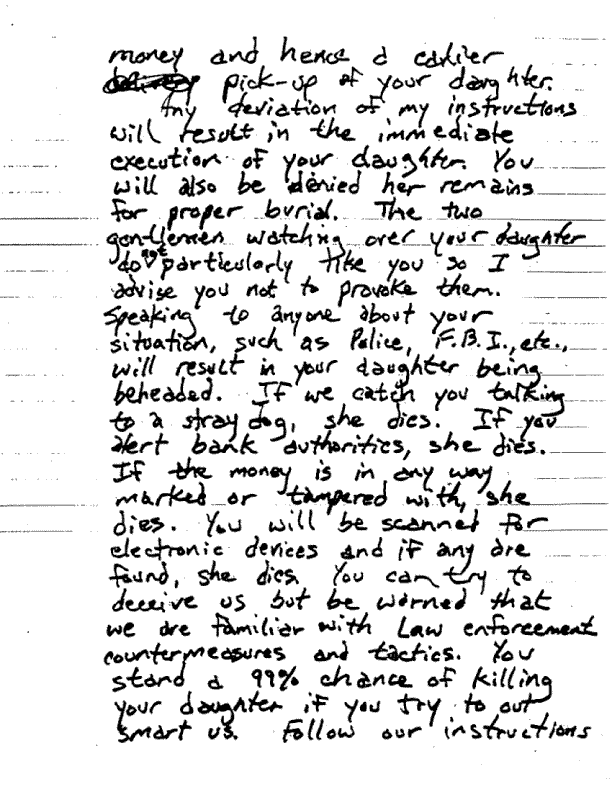
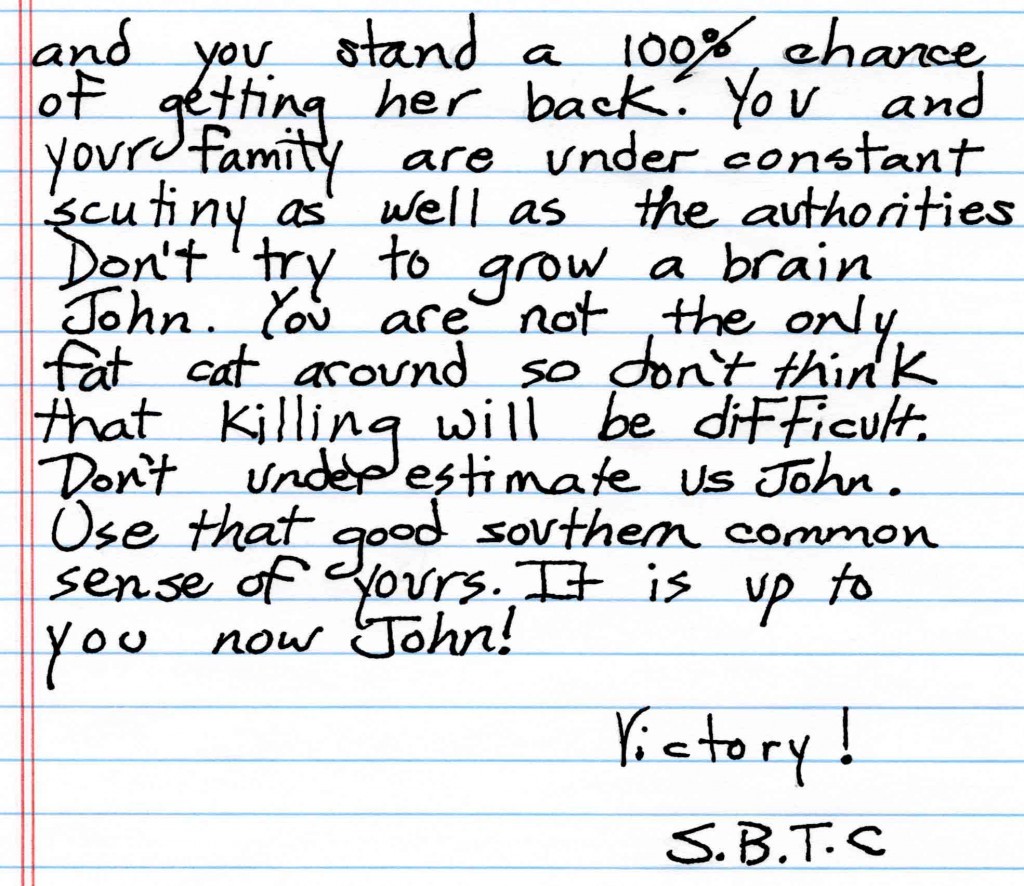

0 Comments